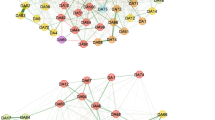Abstract
The Dysfunctional Attitude Scale (DAS) was designed to measure patterns of maladaptive thinking held by depressed individuals. Despite its wide use as a research and clinical tool, only a few studies to date were designed to examine its psychometric properties in a clinically depressed population. Moreover, problems of low sample size and limited tests of validity call these findings into question. The present study was designed to examine psychometric properties of the DAS in clinically depressed inpatients and in nondepressed clinical controls. Intertest correlations between the DAS parallel forms and between each form with total test scores ranged from r=.84 to r=.97. Intratest stability coefficients were r=.88 to r=.97. Support for the DAS as a valid measure of dysfunctional cognitions in depressed patients was also indicated. Of those scoring high on the DAS, 73% received an independent RDC diagnosis of clinical depression, while only 36% of those receiving low DAS scores were so diagnosed.
Similar content being viewed by others
References
Beck, A. (1967).Depression: Clinical, experimental, and theoretical aspects. New York: Harper & Row.
Beck, A. (1973).The diagnosis and management of depression. Philadelphia: University of Pennsylvania Press.
Beck, A., & Beamesderfer, A. (1974). Assessment of depression: The depression inventory.Pharmacopsychiatry, 7, 151–169.
Beck, A., Ward, C., Mendelson, M., Mock, J., & Erbaugh, J. (1961). An inventory for measuring depression.Archives of General Psychiatry, 4, 561–571.
Beck, A., Rush, A., Shaw, B., & Emery, G. (1979).Cognitive therapy of depression: A treatment manual. New York: Guilford Press.
Clark, D., Beck, A., & Brown, G. (1989). Cognitive mediation in general psychiatric outpatients: A test of the content-specificity hypothesis.Journal of Personality and Social Psychology, 56, 958–964.
Cronbach, L. (1970).Essentials of psychological testing. New York: Harper & Row.
Dobson, K., & Shaw, B. (1986). Cognitive assessment with major depressive disorders.Cognitive Therapy and Research, 10, 13–29.
Dohr, K., Rush, A., & Bernstein, I. (1989). Cognitive biases and depression.Journal of Abnormal Psychology, 98, 263–267.
Fleiss, J. (1981).Statistical methods for rates and probabilities. New York: Wiley.
Gart, J. (1966). Alternative analyses of contingency tables.Journal of the Royal Statistical Society (Series B), 28, 164–179.
Hollon, S., & Beck, A. (1979). Cognitive therapy of depression. In P. Kendall & S. Hollon (Eds.),Cognitive-behavioral interventions: Theory, research, and procedures (pp. 153–203). New York: Academic Press.
Hollon, S., Kendall, P., & Lumry, A. (1986). Specificity of depressotypic cognitions in clinical depression.Journal of Abnormal Psychology, 95, 52–59.
Lam, D., Brewin, C., Woods, R., & Bebbington, P. (1987). Cognitive and social adversity in the depressed elderly.Journal of Abnormal Psychology, 96, 23–26.
Norman, W., Miller, I., & Keitner, G. (1987). Relationship between dysfunctional cognitions and depressive subtypes.Canadian Journal of Psychiatry, 32, 194–198.
Persons, J., & Rao, P. (1985). Longitudinal study of cognitions, life events, and depression in psychiatric inpatients.Journal of Abnormal Psychology, 94, 51–63.
Riskind, J., Beck, A., & Smucker, M. (1983).Psychometric properties of the Dysfunctional Attitudes Scale in a clinical population. Paper presented at the World Congress on Behavioral Therapy, Washington, DC.
Silverman, J. S., Silverman, J. A., & Eardley, D. (1984). Do maladaptive attitudes cause depression?Archives of General Psychiatry, 41, 28–30.
Spitzer, R., Endicott, J., & Robins, E. (1978). Research Diagnostic Criteria: Rationale and reliability.Archives of General Psychiatry, 35, 773–782.
Weissman, A. (1976).The Dysfunctional Attitude Scale: An inventory designed to measure the relationship between cognitive distortions and emotional disorders. Unpublished manuscript, University of Pennsylvania, Philadelphia.
Weissman, A., & Beck, A. (1978).Development and validation of the Dysfunctional Attitude Scale. Paper presented at the meeting of the Association for Advancement of Behavior Therapy, Chicago, IL.
Zuckerman, M., & Lubin, B. (1965).Manual for the Multiple Affect Adjective Check List. San Diego, CA: Educational and Industrial Testing Service.
Author information
Authors and Affiliations
Rights and permissions
About this article
Cite this article
Nelson, L.D., Stern, S.L. & Cicchetti, D.V. The Dysfunctional Attitude Scale: How well can it measure depressive thinking?. J Psychopathol Behav Assess 14, 217–223 (1992). https://doi.org/10.1007/BF00962629
Accepted:
Issue Date:
DOI: https://doi.org/10.1007/BF00962629



